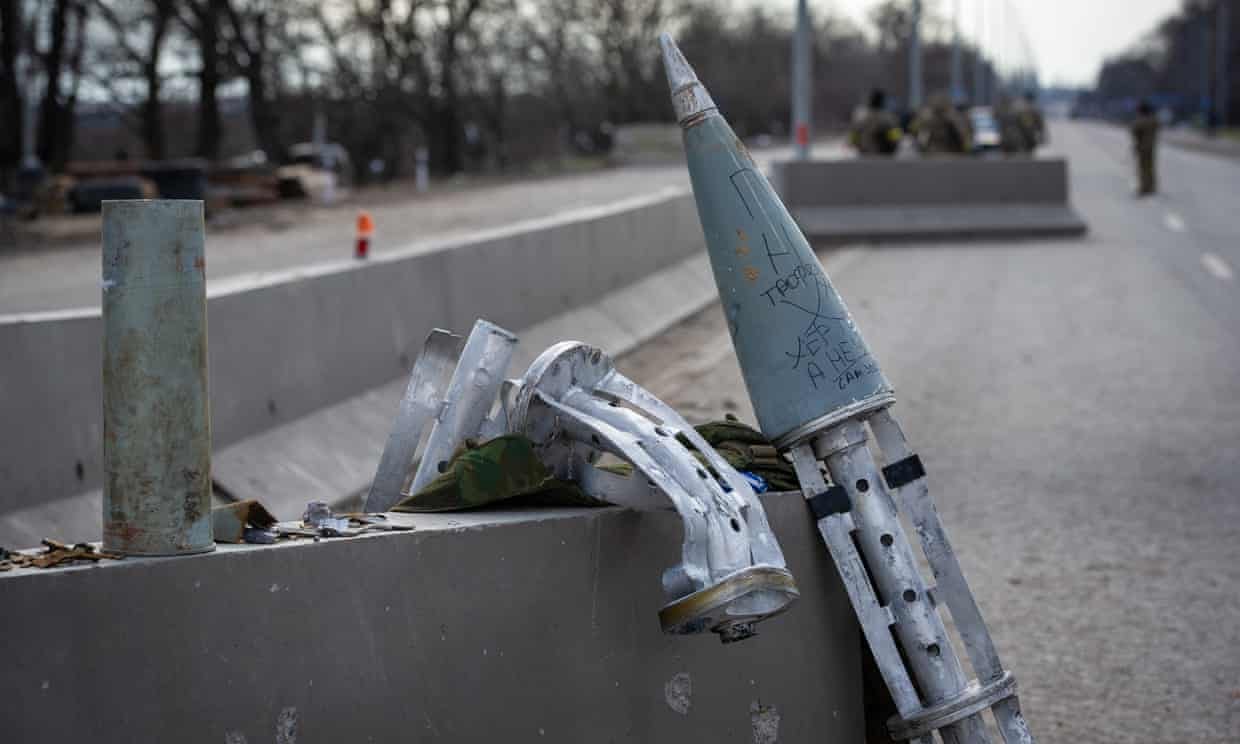US Supplies Cluster Bombs to Ukraine
These Munitions Will Harm Civilians the Most

The sad quip about “NATO fighting against Russia to the last Ukrainian” once again proved apt when Joe Biden took the “difficult” decision earlier this month to supply cluster munitions to Ukraine to facilitate its fight against the Russians.
The supply of cluster munitions is a part of a fresh USD 800 million military aid package to Ukraine and came on the eve of the crucial NATO summit at Vilnius in Lithuania, which was also attended by Ukrainian President Volodymyr Zelensky.
The dangerous nature of cluster munitions, especially for civilians, is well known. Close to 120 countries signed a convention in 2008 against their production and use. In the present case, the decision is more dangerous for Ukrainians for two specific reasons—first, as it provides Russians with a perfect justification to retaliate with far superior force, and second, the battlefields where the munitions will be used are primarily inside Ukraine.
Long-term impact
A cluster munition is a bomb containing multiple sub-munitions. They are dropped from air or fired from the ground and explode mid air to release tens, sometimes hundreds, of sub-munitions which spread across an area equal to several football fields, with no distinction between military and civilian areas.
The sub-munitions explode with impact as they fall on the ground. However, a large number of them fail to explode due to the way in which they fall and become hazardous like landmines, exploding sometimes days or years after they were originally released.
Given the large dud rates—anywhere between 2 to 40%—it is most likely that whoever wins the war will have a herculean task ahead in cleaning up the unexploded munitions to prevent a large number of civilian casualties due to accidental explosions.
This can be understood from the examples of Laos and Cambodia. Nearly 20 million tons of cluster munitions were dropped by the US in Laos, of which 30% remained unexploded. At least 20,000 people in Laos, half of them children, have either died or been injured since 1975 due to explosions caused by unexploded bombs dropped by the US. Clearing unexploded cluster bombs is also more difficult as it is relatively harder to locate them.
Yet another U-Turn
The decision to supply cluster munitions is yet another U-turn in the Biden administration’s Ukraine policy, which had expressed doubts just a few months earlier, claiming that they were too dangerous.
This is now a pattern for the Biden administration—first denying a crucial weapon citing possibilities of dangerous escalation with Russia, but later going ahead with the supply or asking allies with the same set of weapons to do so. US and other NATO members have followed this pattern in the supply of the Patriot missile defense systems, HIMARS rocket launchers, battle tanks, and fighter jets to Ukraine.
When asked by journalists why the decision to send cluster bombs was approved now, Biden made a passing remark that Ukraine had run out of conventional munitions. This took place amid the so-called Ukrainian counteroffensive which was much celebrated by NATO and the Western media.
The decision to supply cluster bombs has invited widespread rebuke. However, it is not clear the concerns raised will really force the US to change its stance. The US is, by far, the largest user of cluster munitions in the world. It has used these weapons indiscriminately in Vietnam, Laos, Cambodia, Afghanistan, and Iraq. Israel, US’s closest ally, used cluster bombs in Lebanon in 2006.
Notably, the use of cluster bombs in Iraq and Afghanistan came years after the ill effects of their use in Laos and Cambodia became clear and the world was already discussing a convention to ban them.
Civilians will be the prime victims
There are already reports about Ukraine’s widespread use of cluster bombs against Russians in the current war and. Cluster bombs were also reportedly used by Ukraine against its own citizens during the initial phases of the Donbass resistance in 2014.
However, following an outcry in the media, it declared that it will not use the bombs received from the US in Russia, which means that they will be used in Russian-controlled regions in Ukraine.
Ukraine anyway has limited or no capacity to drop the bombs deep inside Russian territories.
On the other hand, while saying that Russia has deliberately refrained so far from using cluster munitions in Ukraine given the threat to the civilian population, Russian Defense Minister Sergei Shoigu recently claimed that, “if the US supplies cluster munitions to Ukraine, the Russian armed forces will be forced to use similar means of destruction against the Ukrainian armed forces as a retaliatory measure.”
The civilians in Donbass or Crimea are perhaps going to face the impact of the current war for generations thanks to the Biden administration’s shortsightedness.



